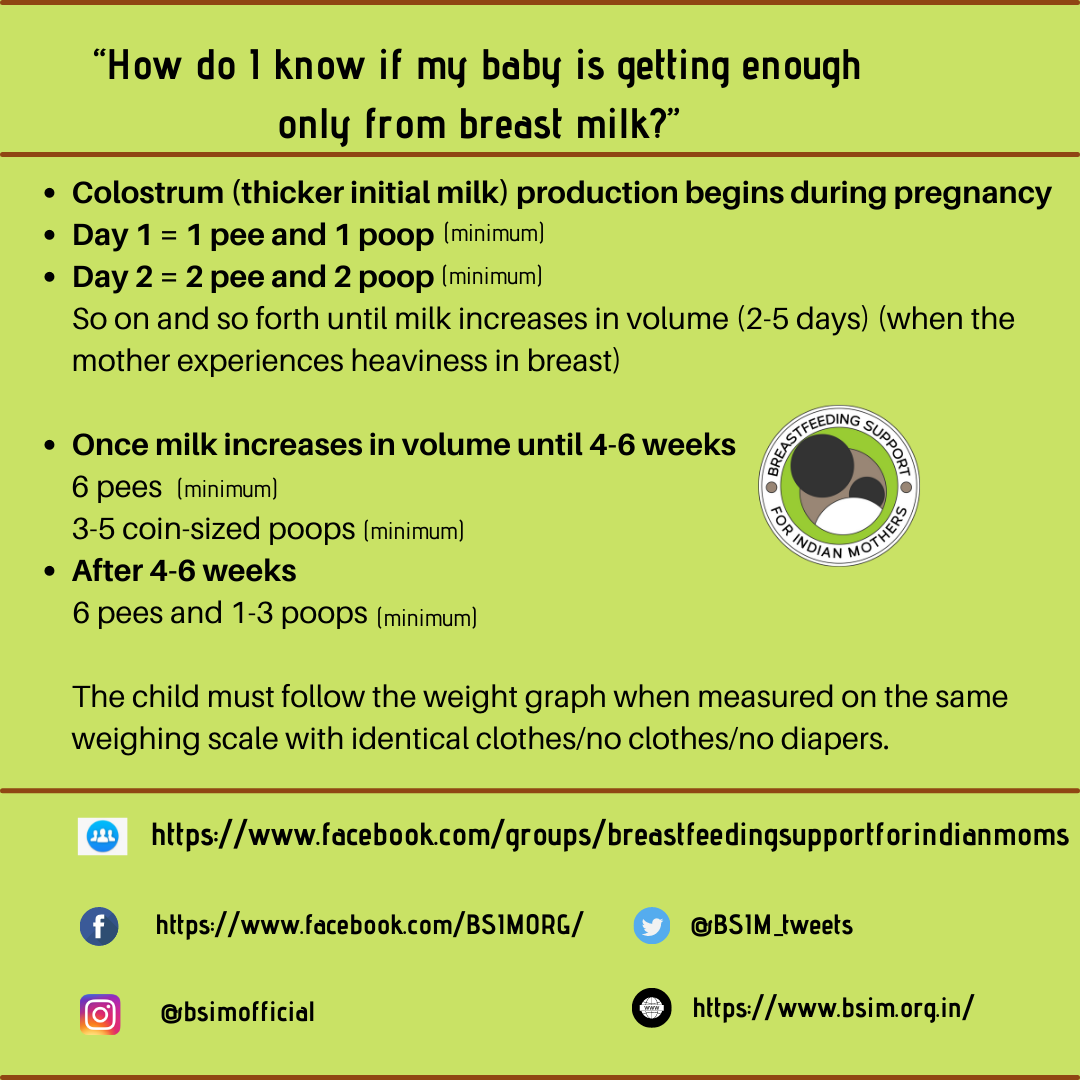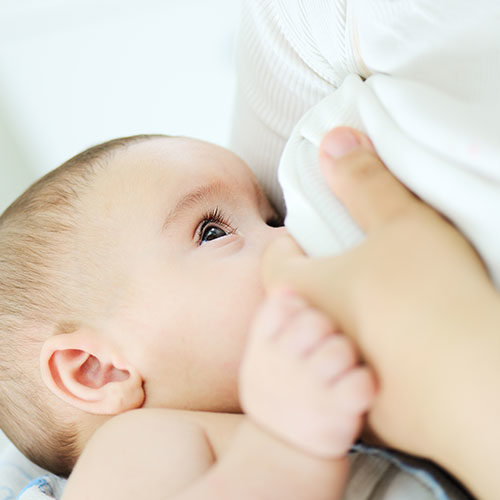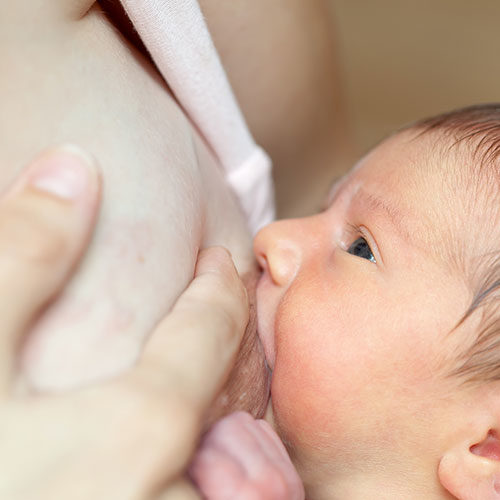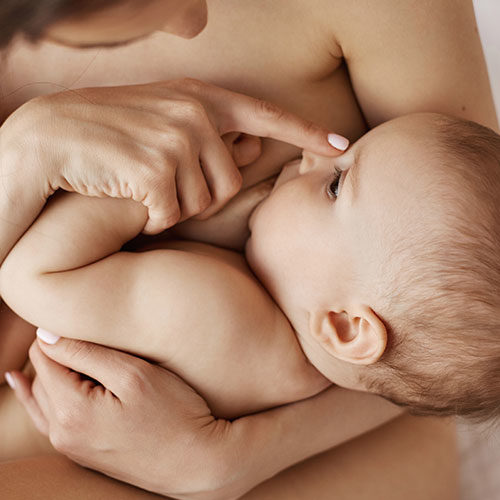How to determine if the baby is getting enough ?
The first question every mother has in her mind is — “Is my baby getting enough?”, followed by the next question — “Am I making enough for my baby?”
‘Is my baby getting enough?’ how is it determined? It is reflected through three things.
- Urine output
- Stool output
- Weight gain
Also, the value/frequency/quality of these three things change according to the baby’s age.

Let’s discuss these three parameters individually.
- Urine Output
Babies pass urine infrequently in the initial days. On the first day, once, the second day, twice; the third day, thrice and so on. Anywhere between the 2nd and the 5th day, the mother’s milk increases in volume, which is when babies usually start passing urine a minimum of 6 times in 24 hours. Urine output is what we popularly refer to as ‘pee count’. It’s counted over a period of 24 hours. 6 is the minimum pee count a baby should once the milk increases in volume. Some babies may pee more than 20 times and that’s perfectly OK, too. The urine should be clear to pale yellow in colour and should not be foul-smelling. When the baby is less than 4-6 weeks old, one wet nappy should be about 45ml (3 tablespoons). When the baby is older than 4-6 weeks old, one wet nappy should be about 60-90ml (4 – 6 tablespoons).
- Stool Output
First stool should be passed within 24 hours after birth. On the first couple of days, the stool is black. This is called meconium. It’s the black substance collected in a baby’s intestines during pregnancy. The more efficient the breastfeeding, the faster the meconium transforms into a green and then mustard yellow stools. The frequency of stool, like that of urine, increases every day until the milk increases in volume. Once on day 1, twice on day 2 and so on. Between day 2 and day 5 i.e. when the mature milk has come in (also called milk increasing in volume), the stools must become mustard yellow. The consistency is often pasty to watery. The texture is seedy or curdy. Baby must now pass stools at least 3-4 times in 24 hours. And the size should be of a circle formed by joining our thumb and index finger. Some babies may pass stools up to 10-15 times in the first few weeks. It is normal and should not be mistaken for diarrhoea. Diarrhoea in exclusively breastfed babies is rare. After the age of 6 weeks, poop count comes down in many babies. Some babies may then poop only once in 7- 10 days, which is not an indication of the mother’s milk supply. If the baby is not pooping at least once a day, it may help if the mother increases her probiotic and prebiotic intake. Click here if you wish to learn more about this.
- Weight
- Initial weight loss
All babies lose some weight after birth. By day 4, babies lose up to 5% to 7% of their birth weight. This is common and normal. Losing more than 10% of birth weight is routinely considered worthy of calling for medical attention. However, some babies are born with inflated weights as a result of IV fluids given to the mother during labour. Such babies may lose more weight but are still fine because they are only shedding the extra birth weight caused by IV fluids. There are differences of opinion about this amongst medical professionals, though. In India, the majority of doctors say that a baby needs medical attention if the baby loses more than 10% of his/her birth weight.
If the baby loses 15% or more of its birth weight or if the baby does not regain birth weight by day 15, the family would need to consult a Lactation Counsellor and Paediatrician if the baby has been measured on the same scale with same (or no) clothes. This is provided the baby has been weighed on the same weighing scale since weight gain should be compared when the baby has been weighed on the same scale.
- Weight gain
Baby must stop losing weight by day 5 and start gaining weight. A full-term healthy newborn usually gains 500 to 700 grams in a month. (18-24 grams per day) Some babies gain even more, and it’s perfectly OK too. As a thumb rule, if a baby gains a minimum of half kg i.s. 500 grams in a month, it can be said that the baby is getting enough breast milk. It is important to note that babies follow their unique pace in gaining weight. Some babies are fast gainers in the beginning. They may gain up to 1 kg per month in the initial 3 months and then slow down. There is no need to worry just because now the child is gaining around 700 grams as compared to 1000 grams. The baby is still gaining more than 500 grams and is only following his/her growth curve.
Some babies may steadily gain 500-600 grams per month throughout the first 6 months. And some may start slow and then pace up later. As long as the baby is getting enough as per the table given below, there is no reason to worry. Another thing to keep in mind while checking weight is to use the same scale throughout. For newborns, a difference of a few grams may also be a lot. Therefore, it’s important to maintain the baby’s weight history recorded on the same weighing scale. Also, certain things need to be kept constant. E.g. If the baby is weighed without clothes, then the baby needs to be weighed without clothes every time to record accurate weight gain. (Important to follow this in the initial days until baby has crossed birth weight)
Usually, babies double their weight between 4 and 6 months. They triple it by the time they are one year old.
The following table is a handy tool to spot your baby’s age and accordingly find if the baby is meeting all the parameters that determine whether the baby is getting enough. This information given below applies to healthy, full term-born, exclusively breastfed babies.
Baby’s Age | Urine Output (in 24 hours) | Stool Output (in 24 hours) | Weight gain |
1 day | Baby passes urine at least once within the first 24 hours Colour: clear to pale yellow Smell: no smell to mild | Baby passes first stool (meconium) within the first 24 hours Colour: black | Baby loses weight |
2 – 5 days | Baby passes urine at least equal to the age of the baby in days. i.e. Day 2 = 2 pees. Day 3 = 3 pees etc. Colour: clear to pale yellow Smell: no smell to mild | Baby passes stool at least equal to the age of the baby in days. i.e. Day 2 = 2 poops. Day 3 = 3 poops etc. Colour: Transitions from black (meconium) – to green | Baby loses weight |
5 days – 14 days | Baby passes urine minimum of 5 to 6 times Colour: clear to pale yellow Smell: no smell to mild | Baby passes stool at least 3-5 times Colour: mustard yellow Quantity: minimum of a coin-sized impression on the nappy | Baby continues to gain weight and crosses birth weight by the age of 14 days |
15 days to 45 days Note: 45 days mark 1.5 months or 6 weeks of age. | The baby passes urine at least 6 times Colour : clear to pale yellow Smell: no smell to mild | Baby passes stool at least 3-5 times Colour: mustard yellow Texture: seedy Quantity: minimum of a coin-sized impression on the nappy | Baby has crossed birth weight and should gain minimum 500 grams per month starting from the age of 15 days |
6 weeks to 6 months | Baby passes urine at least 6 times Colour: clear to pale yellow Smell: no smell to mild | The stool frequency comes down in most babies. The baby passes stool at least 1-3 times | Baby gains a minimum of 500 grams of weight per month. During the 6th month or by the end of it, babies have usually doubled their birth weight |
It is important to understand that along with these parameters, the baby’s activity levels while the baby is awake and other milestones are to be monitored. Usually, a baby that is active, pees 6 or more times in 24 hours (after the first week of birth), passes sufficient stools, is gaining weight and is achieving milestones on time and is doing well.
Certain myths regarding whether the baby is getting enough:
- The baby is burping; so, the baby is full. Or if the baby doesn’t burp, the baby is not full. This is not true. Burping is letting out of the air baby swallows while nursing. While breastfeeding, a good latch creates a vacuum and hardly any air goes inside the baby’s mouth. Therefore, a lot of breastfed babies don’t or hardly burp. Burping is not an indicator of a baby’s intake.
- Baby is demanding to nurse very often, so he/she may not be getting enough. This is not true. Babies are expected to be nursing at least 10-12 times in 24 hours or more. A lot of babies cluster feed in the evening and night hours. (Cluster feeding is nursing continuously for long hours or nursing very often at very short intervals) This is normal newborn behaviour. It does not indicate that the baby is not getting enough and is remaining hungry. In fact, frequent nursing is good for the mother’s supply.
- Baby is crying after feeding, so the baby is not getting enough. This is not always true. Babies cry for a lot of reasons apart from hunger. Crying is their only means of communication. It should not be translated into only one thing, viz hunger. The baby could be feeling cold/hot, could be in discomfort due to gas/colic, could be wanting warmth or security by skin to skin contact, could be wanting to sleep etc. If a baby cries immediately after nursing, it can be because the baby wants to continue to nurse not only to quench hunger or thirst, but to be close to the mother. Perhaps the baby wants to sleep while nursing. Probably, the baby wants to burp. Sometimes, babies can be hungry too, so it’s always great to offer to nurse. But, it is important to remember – that crying does not always indicate hunger. Click here to learn more.
- Baby is sucking on his/her fist/fingers, so the baby is hungry. This is true for babies under the age of 3 months. However, babies achieve a milestone of hand to mouth movement around the age of three months. That is when they learn to explore the world through their mouth by bringing whatever they can to their mouth. Starting with their own body parts like fists and fingers, sometimes feet, to toys (if given in their hands). Once a baby achieves this milestone, hand to mouth ceases to become an indicator of hunger. Click here to learn more.
A mother could be making more than enough milk and the baby may still not be getting enough. Therefore, if the baby is not getting enough, don’t be quick to doubt your supply. Always check other factors as well.
If the baby is not getting enough milk, first work on improving the latch, as suggested here at the very earliest. Alongside, please work with a qualified and recommended lactation professional to establish breastfeeding as an investment in your child’s well-being.
If you are seeking one-on-one lactation support from the comfort of your home, Breastfeeding Support for Indian Mothers offers Online Lactation Consultation, which can be booked here.
We also provide volunteer support on our 24X7 support group on Facebook, which you can join by clicking here.
P.S.: We do not accept Facebook profiles with inaccessible information. If your profile is locked/ inaccessible, you will need to send a Personal Message to our Facebook Page to join our free Facebook support group.
Sources :
- www.kellymom.com
- www.breastfeedinginc.ca
- Child care: 2nd edition, BPNI-Maharashtra state branch
Wish to speak with a member of our team who is a certified lactation professional and also an experienced breastfeeding mother, click on this link.
Medical Advice Disclaimer
THIS WEBSITE DOES NOT PROVIDE MEDICAL ADVICE.
The information, including but not limited to, text, graphics, images and other material contained on this website are for informational purposes only. No material on this site is intended to be a substitute for professional medical advice, diagnosis or treatment. Always seek the advice of your physician or other qualified health care provider with any questions you may have regarding a medical condition or treatment before undertaking a new health care regimen, and never disregard professional medical advice or delay in seeking it because of something you have read on this website.
Disclaimer
We understand and acknowledge that parents and babies can be of various genders on a spectrum of LGBTQI+. Families come in diverse flavours. However, in our articles, for the sake of simplicity and convenience, we will be referring to the breastfeeding parent as the mother and using the female pronouns- ‘she’ and ‘her’ for babies. Babies can be nourished and nurtured in different ways and while we have used the terms breastfeeding and nursing, we recognize that parents can opt to chest feed or finger feed.
We don’t have conflicts of interest and declare, and we are compliant with the WHO code of marketing of breastmilk substitutes and the IMS act.
In case you find any information on this website that needs to be updated, please write to us at info@bsim.org.in






